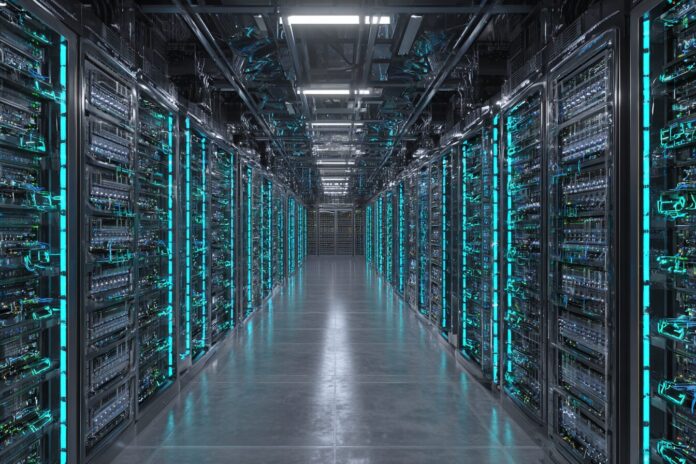The AI-Driven Transformation of the Bitcoin Mining Landscape
Bitcoin mining continues to evolve at a breakneck pace, and most importantly, recent landmark events have catalyzed a transformation across the industry. On September 8, 2025, Microsoft announced a staggering $17.4 billion agreement with Nebius that provides access to state-of-the-art GPU infrastructure for AI workloads in a cutting-edge New Jersey data center. This massive commitment is not simply a standalone deal; it represents a significant milestone that has reinvigorated the entire Bitcoin mining ecosystem.
Because of this strategic partnership, Bitcoin miners now have enhanced access to resources that were once considered exclusive to high-performance computing environments. Enhanced data centers have become essential for harnessing both the power of AI and the demanding computational tasks of mining. Therefore, this integration creates a robust synergy between artificial intelligence and blockchain technology, establishing a resilient infrastructure that can handle the increasing demands of digital asset transactions.
Why Microsoft’s AI Bet Matters to Crypto Miners
Mining cryptocurrencies like Bitcoin requires a level of computational power that only the most advanced hardware can deliver. Most importantly, every miner in the network depends on streamlined operations to solve intricate mathematical puzzles and verify blockchain transactions. Because these puzzles necessitate rapid and relentless GPU processing, access to modern AI-powered data centers can significantly enhance mining operations.
Besides that, the influx of AI-centric investment into GPU-rich data centers benefits not only the technology sector but also offers a substantial boost to the crypto mining community. Microsoft’s large-scale investment is a prime example of how traditional tech giants are opening new avenues for digital asset growth. As highlighted by Nebius and Microsoft’s AI Agreement, such investments drive enhanced computational power, which directly translates into increased efficiency and profitability for Bitcoin miners.
Market Reactions: Miners and Stocks on the Rise
Following the high-profile announcement, market reactions have been overwhelmingly positive. Investor confidence rose sharply as stocks tied to Bitcoin mining—such as those of MARA Holdings—experienced significant gains. Because of this strong market sentiment, investors are now viewing the infrastructure overhaul as a bullish sign for both the AI and crypto sectors alike. Consequently, as demand grows, companies like Nebius are rapidly scaling up their capabilities.
In addition, recent data reveals that Nebius’s annual recurring revenue surged from $90 million in late 2024 to an impressive $430 million by mid-2025. Moreover, new financial projections now anticipate revenue reaching up to $1.1 billion for the current year. This robust growth underlines the expanding role of tech infrastructure investments in adjacent fields, such as crypto mining. For further insights on market trends, please refer to the detailed analysis on MARA Holdings and Market Performance.
Inside the Bitcoin Mining Process
The process of Bitcoin mining is both art and science. Miners work relentlessly to secure the blockchain by solving cryptographic puzzles, which when solved enable the creation of new blocks and the reward of freshly minted Bitcoin. Most importantly, the efficiency of this process is closely tied to the quality of the hardware used. Because GPUs and ASIC chips are at the forefront of this technology, their integration into large-scale data centers is vital for maintaining competitive edge.
Besides that, access to modern AI data centers gives miners the leverage they need to scale operations and optimize energy consumption. Therefore, as more investors and companies focus on deploying high-powered hardware, mining farms can achieve the required economies of scale. This critical synergy between AI developments and mining technology is explored in greater detail on platforms such as CoinDesk Bitcoin Mining News and Bitcoin Coin Price & Mining Insights.
Proof-of-Work and Security in the Bitcoin Network
The security of the Bitcoin network is built on the Proof-of-Work (PoW) consensus mechanism, which remains the backbone ensuring a decentralized system. Most importantly, PoW safeguards the network by requiring miners to invest significant amounts of computational power. Because it compels participants to prove they have expended energy, this method deters potential malicious actors and upholds the integrity of the blockchain.
Furthermore, this distributed and resource-intensive process means that Bitcoin remains one of the most secure digital assets available. Miners operating in AI-enhanced data centers not only improve their chances of validating blocks faster but also contribute to an overall more resilient network. This practical intersection of technology and security underlines why innovations in AI infrastructure are now crucial for sustaining blockchain reliability.
Strategic Partnerships Driving Industry Growth
Strategic collaborations are now more critical than ever in driving forward the digital revolution. Microsoft’s synergistic partnership with Nebius exemplifies how big tech investments can infuse the crypto mining sector with fresh capital and innovation. Most importantly, such partnerships open new avenues for both sectors by merging AI methodologies with blockchain operations.
Because of these integrated strategies, companies can tap into diverse revenue streams. In addition, investors are beginning to view these partnerships as harbingers of the next wave of household digital and tech brands, as predicted by experts on FinViz’s AI Stock Prediction. Therefore, the Nebius-Microsoft alliance is not just about monetary investment but also about fostering deeper technological convergence to boost both operational capacity and market confidence.
Looking Ahead: Long-Term Implications for Miners
The long-term prospects for Bitcoin miners look exceptionally bright. Most importantly, the continued evolution of AI infrastructure means miners who adopt these technologies will excel in a tightly competitive market. Because modern data centers facilitate rapid scaling and efficient energy usage, the gap between traditional mining operations and those leveraging new technology will widen even further.
Besides that, institutional endorsements, exemplified by Microsoft’s massive investment, further validate the essential role of technologically advanced mining. Therefore, we can expect sustained growth in mining efficiency, coupled with improved network security and profitability. As these trends continue, both private and public investors are likely to ramp up their engagement in a market that promises long-term potential and innovative breakthroughs.



